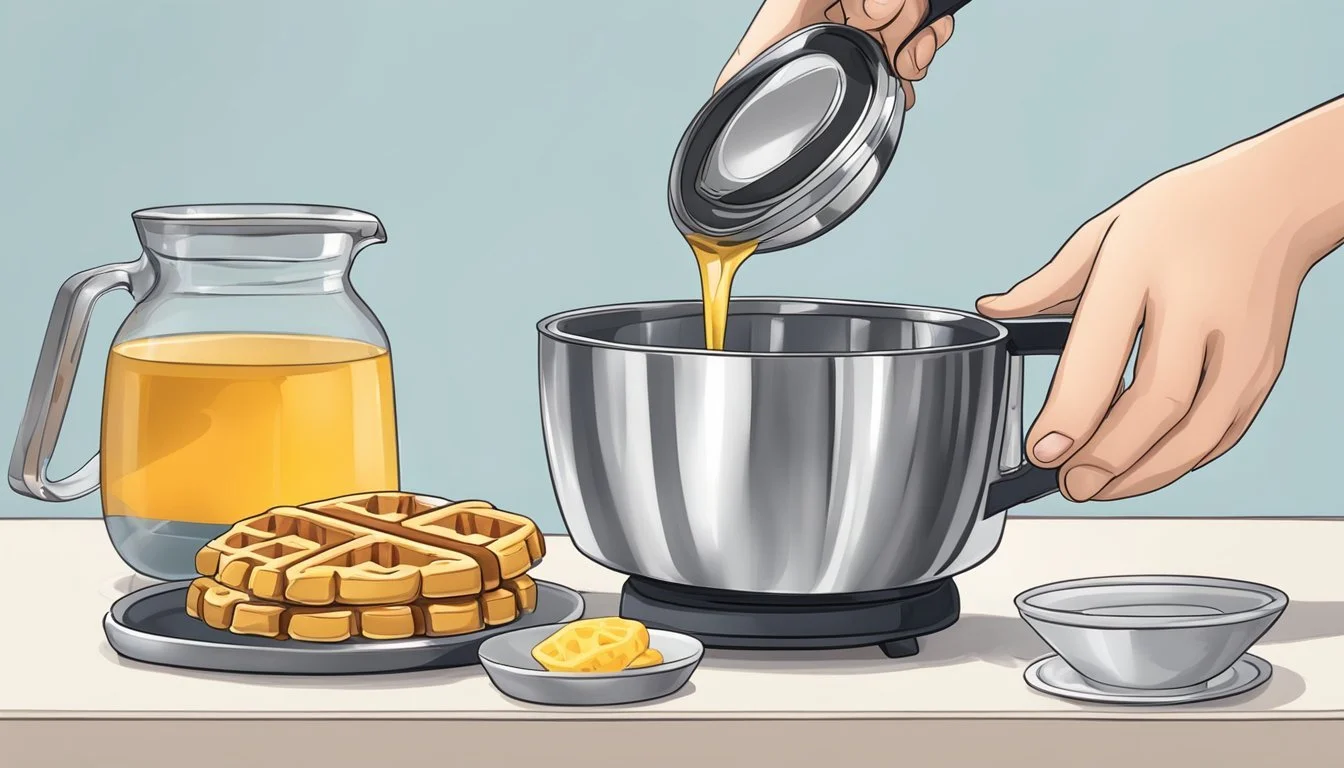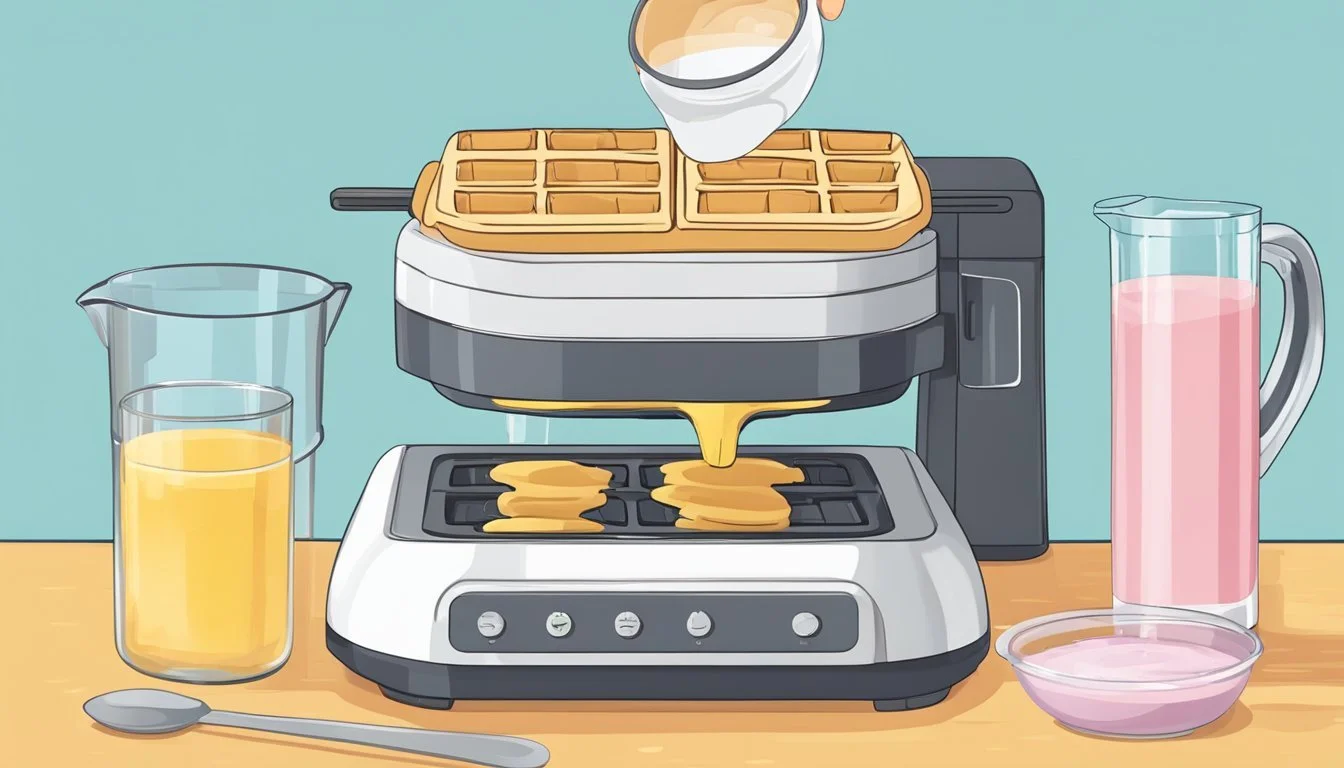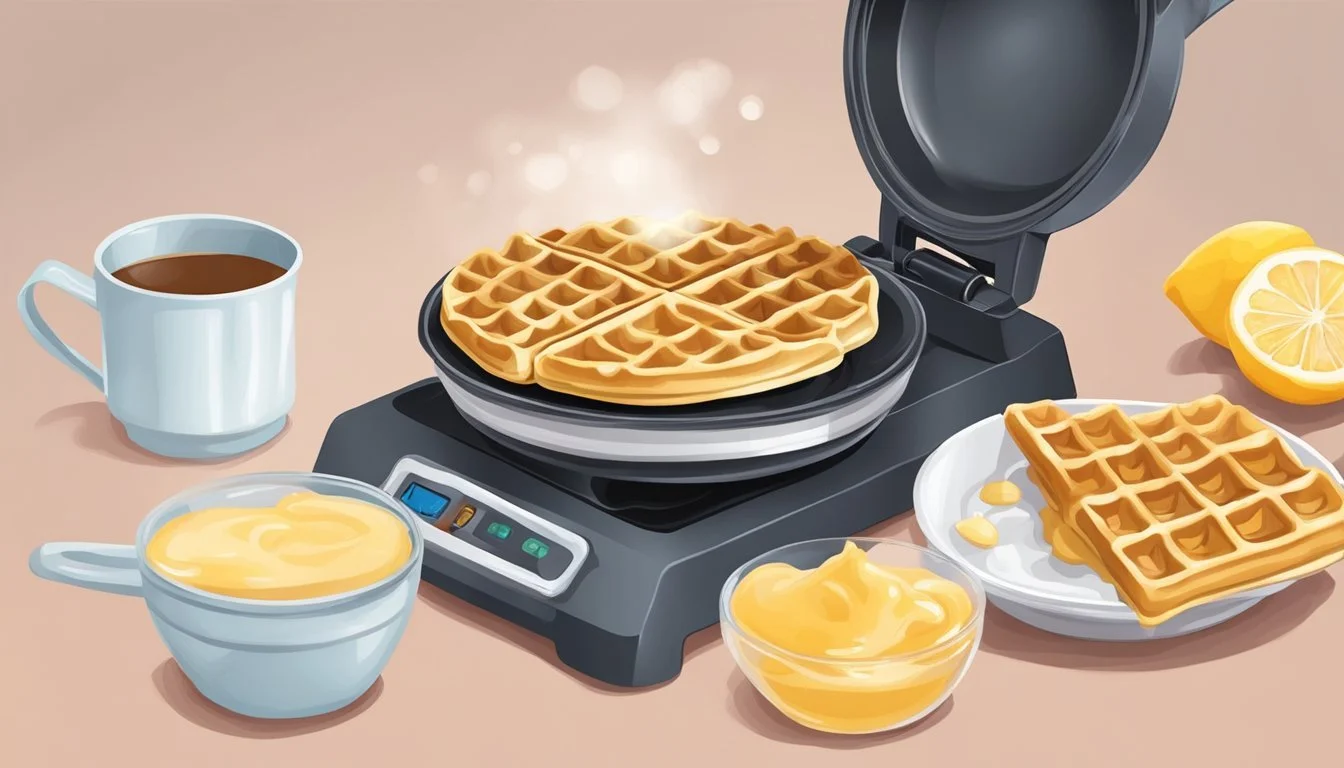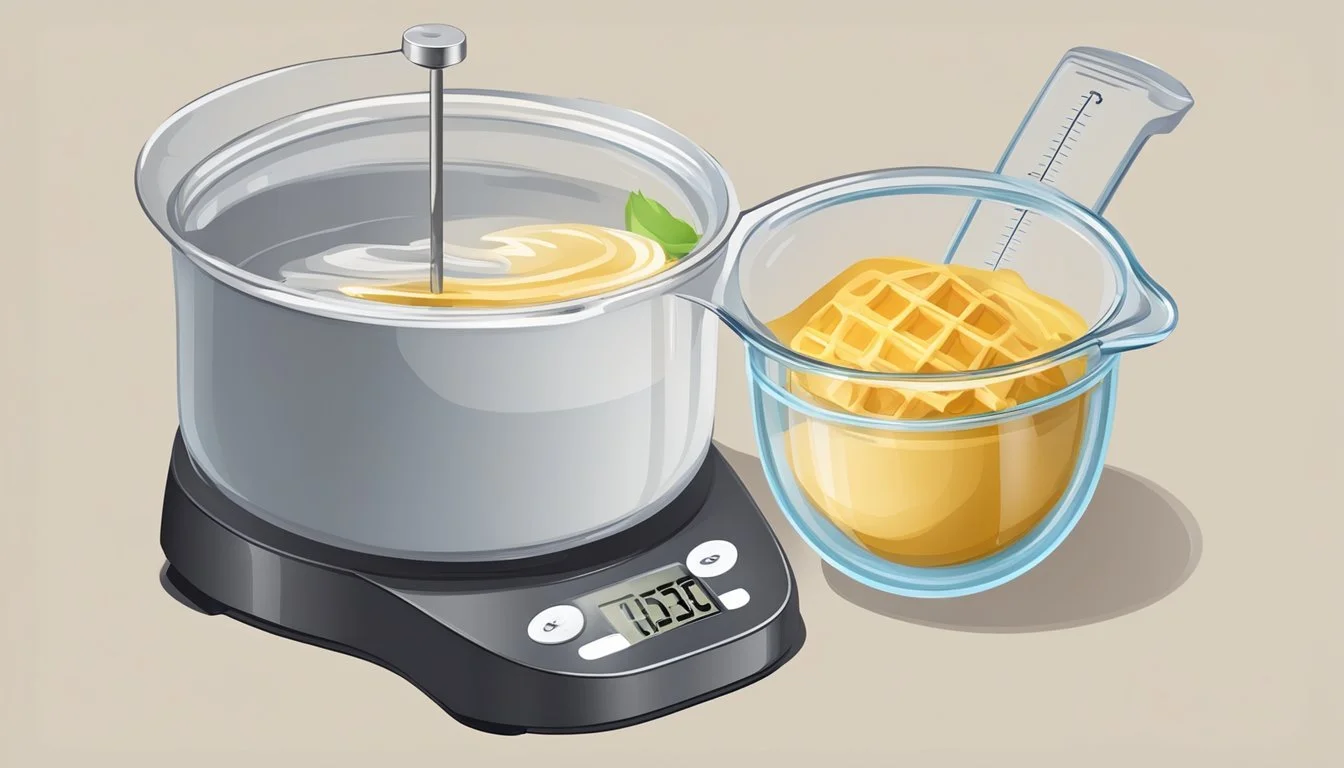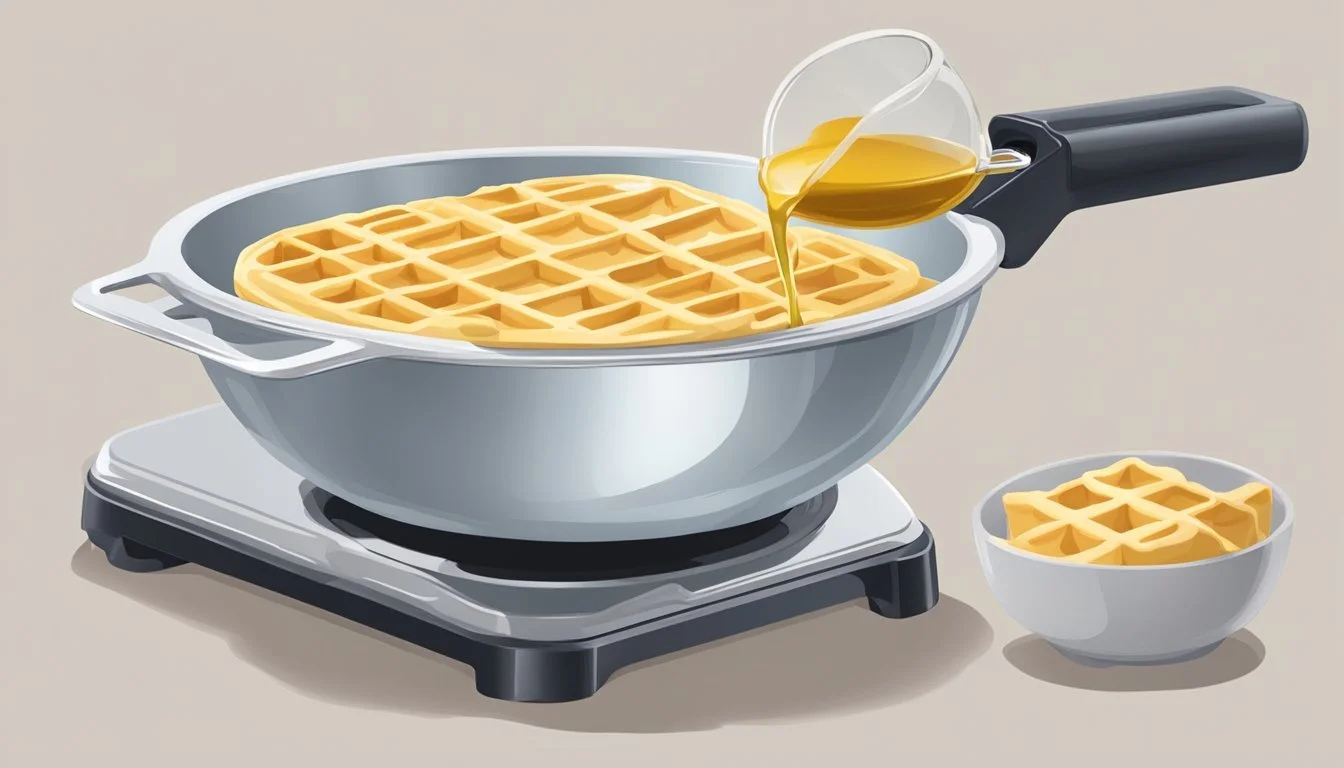How to Measure the Right Amount of Liquid for Perfect Waffle Fillings Every Time
Crafting the perfect waffle often starts with mastering the precise measurement of batter, whether following a beloved family recipe or experimenting with a new blend. The quantity of liquid for waffle batter impacts not just the taste and texture but also how it interacts with the waffle iron. Too little batter leads to incomplete waffles, while too much can cause overflow, creating a mess and potentially damaging the appliance.
Understanding the capacity of the waffle iron and the consistency of the batter is crucial. Most standard 7-inch waffle irons will require approximately 1/2 to 2/3 cup of batter for optimal results. This amount ensures that the batter spreads to cover the grids just enough to form a perfectly shaped waffle without spillage. Measuring cups or ladles can be effective tools for transferring the batter, ensuring uniform size and shape with every portion poured.
With the waffle iron preheated to the preferred temperature, typically around 350°F to 365°F, the prepared batter should be poured into the center of the iron, allowing it to naturally spread towards the edges under the closing lid. Each waffle iron is unique, and manufacturers often provide guidelines for the recommended amount of batter, which serves as a helpful reference point for achieving the best results.
Understanding Waffle Batter Composition
Crafting the perfect waffle batter involves a balance of dry and wet ingredients that affect texture and taste. Mastery of this balance leads to waffles with the desired fluffiness and consistency.
Role of Dry Ingredients
The dry ingredients, primarily all-purpose flour, are foundational in waffle batter composition. They provide structure due to the gluten content when mixed with wet ingredients. Typically, one might see the use of baking powder and baking soda; these are chemical leaveners that create a fluffy texture by producing carbon dioxide when heated. Salt enhances flavor, and sugar contributes to both taste and browning. The typical ratios are as follows:
All-purpose flour: 2 cups
Sugar: 2 tablespoons
Baking powder: 2 teaspoons
Salt: 1/2 teaspoon
It is crucial to mix these ingredients evenly to ensure a uniform texture in the waffle.
Importance of Wet Ingredients
Wet ingredients, including milk, eggs, melted butter, and vanilla extract, are essential for their moisture and fat, which enrich the batter, making it tender.
Milk: 1 1/2 cups (use buttermilk for tanginess)
Eggs: 2 (large)
Melted butter: 1/2 cup
Vanilla extract: 1 teaspoon
They also contribute to the chemical reactions that occur during cooking, affecting rise and texture. Eggs are crucial as they bind the ingredients together and introduce air into the mixture, contributing to the lift and lightness.
Adjusting Batter Consistency
Achieving the desired batter consistency is a fine balancing act. A thick batter will generally yield more fluffy waffles, while a thinner batter leads to crisper waffles. If the batter is too thick, adding small increments of milk can help loosen it. Conversely, if the batter is too runny, a spoonful of flour can help thicken it. The consistency should be smooth and slowly pourable.
Monitoring the batter consistency is necessary for cooking waffles that meet personal preference and the specific waffle maker's guidelines. Proper consistency ensures even cooking and the ideal interior texture.
Preparation Techniques Before Measuring
Prior to measuring liquids for the ideal waffle filling, it's essential to properly prepare the liquid batter. This includes employing methods that yield a consistent texture conducive for fluffy and light waffles.
Proper Mixing Method
One begins by collecting all the ingredients for the batter recipe. It is critical that one follows the recipe's instructions closely to preserve the delicate balance required for a light batter texture. The ingredients should be at room temperature to ensure they mix evenly. A gentle folding action is crucial when combining wet and dry constituents to prevent overmixing, which can deflate the batter and result in less fluffy waffles.
Resting the Batter
After mixing, the batter should be allowed to rest. This pause, typically lasting between 5 to 30 minutes, permits the flour to hydrate and the gluten strands that have formed during mixing to relax. As a result, the texture of the final waffle will be more tender and airy. This resting period also allows any bubbles in the mixture to rise and dissipate, contributing to a fluffy texture in the perfect waffle.
Selecting the Right Tools for Measuring
Measuring the correct amount of liquid for waffle filling is essential to achieve the desired consistency and taste. The selection of accurate measuring tools is a crucial step in this process.
Types of Measuring Cups
When preparing waffle filling, the chef considers both wet and dry ingredients. For wet ingredients, such as milk or oil, a translucent measuring cup with a spout is preferred for its ease of pouring and reading liquid measurements. It is critical to use the right size to measure the volume needed accurately.
Standard Measuring Cups: Typically made from glass or plastic and marked with measurements in cups and milliliters.
Specialized Measuring Cups: Designed for particular ingredients or measurements. For example, some have markings for specific waffle filling recipes.
Understanding Different Measurement Units
Different recipes may call for various measurement units. A profound understanding of how to convert between units ensures that the filling turns out as intended.
Teaspoons (tsp) and tablespoons (tbsp)
Fluid ounces (fl oz), cups, pints, quarts, and liters
Unit Equivalent 1 tsp 4.93 ml 1 tbsp 14.79 ml 1 cup 237 ml
For precision, the chef makes sure to fill the measuring cup to the appropriate line without going over or under, which could compromise the flavor and texture of the waffle filling.
Waffle Maker Usage and Care
Proper setup, prevention of sticking, and regular cleaning are essential for the longevity of a waffle iron and the quality of waffles produced. Adhering to these steps ensures the waffle maker performs at its optimal level.
Setting Up the Waffle Iron
Before using a waffle maker, it is crucial to preheat the appliance to the desired temperature, often indicated by an indicator light. Whether one is employing a Belgian waffle maker or a maker for regular waffles, uniform preheating across the iron's surface is integral for even cooking.
Prevention of Batter Sticking
To prevent batter from sticking, lightly coat the nonstick surfaces of the waffle maker with cooking oil or butter using a pastry brush or a paper towel. Non-stick spray can also be used, but it should be applied sparingly to avoid buildup. One should focus on the center and outward, ensuring a comprehensive coat.
Cleaning and Maintenance
After use, allowing the waffle iron to cool completely before cleaning is essential. Using a soft cloth or sponge, one can clean the nonstick surfaces with warm, soapy water. Abrasive cleaners or scouring pads should be avoided to prevent damage to the nonstick coating. Ensuring the appliance is dry before storing will help maintain its condition.
Measuring and Pouring Liquid Batter
Crafting the perfect waffle requires precision in both measuring and pouring the batter. The right amount ensures optimal thickness and crispiness, while the correct pouring technique promotes even cooking to achieve that desired golden brown finish.
Determining the Right Amount
To determine the right amount of batter for a waffle maker, one must consider the size of the waffle iron. Typically, a standard 7-inch waffle maker requires between 1/2 to 2/3 cup of batter. The consistency of the batter impacts the end product. A batter that is too thin will not provide the needed structure, while overly thick batter might not spread properly and can lead to undercooked centers or uneven crispiness.
Waffle Maker Size Recommended Batter Amount Small (4-5 inches) 1/3 - 1/2 cup Standard (7 inches) 1/2 - 2/3 cup Large (8-9 inches) 3/4 - 1 cup
Heating the waffle maker to about 365°F (180°C) is crucial before pouring the batter to prevent sticking and ensure the batter cooks upon contact, providing a crisp exterior.
Techniques for Even Distribution
When pouring batter into the center of the lower grid of the preheated waffle maker, it's important to use a steady hand to ensure the batter spreads evenly towards the edges. This promotes uniform cooking and thickness, which are essential for a perfectly textured waffle. Starting from the center allows the batter to flow naturally to fill the mold without overfilling, which can cause spillage when the upper grid is closed.
To prevent the waffle from sticking to the grids and to contribute to a golden brown hue, avoid using non-stick spray. Instead, opting for a lightly oiled waffle maker, if necessary, helps maintain the batter's integrity. Pouring the batter can be accomplished using a measuring cup for control and precision, taking care not to overfill. The batter should fill the lower grid comfortably without reaching the very edge, leaving space for expansion once the upper grid is brought down.
Monitoring Cooking Time and Temperature
Properly monitoring cooking time and temperature is critical when preparing Belgian waffles to achieve the ideal crispy texture. A Cuisinart waffle maker, for instance, typically comes with an indicator light and audible beep, signaling that it is sufficiently heated to start cooking and also when the waffles are done.
Waffle Type Cooking Time Temperature Setting Belgian 4-5 minutes Medium to Medium-High
Before pouring the liquid batter into the waffle iron, ensure it reaches the recommended temperature. Most waffle irons have a preheat time of 5-10 minutes. One should pour the filling only when the indicator light signals that the preheat phase is complete.
It is also important to note that temperature consistency plays a huge role in cooking waffles. Inconsistent temperatures can lead to uneven browning and texture. Therefore, one should not open the waffle maker unnecessarily, as this can cause heat loss and affect the cooking process. Once the waffle batter is in, allow it to cook undisturbed.
Remember, crispy Belgian waffles require a higher temperature compared to regular waffles. However, temperatures that are too high might burn the waffles before they cook through, so finding that sweet spot is key.
Finally, every waffle maker is different. It is crucial for users to read their gadget's instruction manual to understand the timing and temperature settings unique to their machine. Following these guidelines will help ensure delicious, perfectly-cooked waffles every time.
Finishing Touches for Perfect Waffles
Once the right amount of liquid for waffle batter is measured, one achieves the foundation for waffles. However, to elevate them to perfection, attention to finishing touches is key. They must consider both the toppings that add flavor and texture dimensions, as well as the cooking technique that ensures the desired waffle texture.
Ideal Toppings and Add-ins
The choice of toppings and add-ins can significantly enhance the final taste of waffles. One should consider:
Butter: A pat of butter adds richness and can help to crisp up the exterior.
Sugar: A sprinkle of sugar, especially coarse varieties, contributes to a caramelized crust.
Vanilla extract: A few drops impart a warm and comforting aroma.
Flavors: Incorporating flavors like cinnamon or pumpkin spice into the batter can delight the palate.
Favorite toppings can vary by individual preferences, but here are a few popular suggestions:
Fresh fruits like strawberries or blueberries
Maple syrup or honey for sweetness
Whipped cream for a luxurious element
Chocolate chips or nuts for added texture and flavor
Achieving Desired Waffle Texture
To obtain light and fluffy waffles with a crispy exterior, one should be mindful of:
Baking temperature: High heat contributes to a crispy shell, while a moderate heat allows the waffle to cook through for that airy interior.
Amount of batter: Too much batter can cause spillage, while too little might result in thin, limp waffles. Around 1/2 cup for Belgian and 1/3 cup for American-style waffles is generally recommended.
Cooking time: A longer cook on a lower setting increases fluffiness, while a shorter cook on a high setting enhances the crust.
Batter consistency: If the batter is overly thick, adding a small quantity of milk can lighten it. Conversely, a too-thin batter may benefit from a bit of additional flour.
Common Mistakes to Avoid
When measuring liquid for waffle batter, cooks often encounter certain pitfalls that can affect the outcome of their waffles. Avoiding these common mistakes is crucial for achieving the desired consistency and prevent the waffles from sticking to the iron.
Not Measuring Accurately: Precision is key. It's essential to use measuring cups or a kitchen scale for liquids. Even a small deviation from the recipe can alter the batter’s texture.
Overmixing the Batter: The batter should be mixed just until the ingredients are combined. Overmixing can lead to a tough waffle as it develops the gluten in the flour too much.
Incorrect Use of Baking Powder: Baking powder is a leavening agent that helps waffles rise. Too much or too little can lead to flat or excessively fluffy waffles. One should always adhere to the recipe's specified amount.
Pouring Too Much or Too Little Batter: A common mistake is to fill the waffle iron with an incorrect amount of batter. This can cause spillover or incomplete waffles. Typically, a 1/2 to 2/3 cup of batter is sufficient for a 7-inch waffle iron.
Mistakes in Using the Waffle Iron: Not preheating the iron adequately or using it improperly can cause waffles to stick. One should avoid non-stick sprays if the iron is already non-stick. Instead, using a light coating of oil if necessary can prevent sticking without compromising the waffle's texture.
By being mindful of these common errors, one can ensure their waffles come out perfectly cooked and mess-free.
Product Guide and Recommendations
In selecting the appropriate waffle maker and understanding its capacity, one can ensure the right amount of liquid batter for consistently perfect waffles every time.
Top Waffle Maker Models
The market offers a range of waffle makers, each with different features to suit various needs. Cuisinart WAF-F20 Double Belgian Waffle Iron is a standout, appreciated for its efficiency in making two large Belgian waffles simultaneously. Its features include a 6-setting browning control, non-stick coating, and LED indicator lights.
Another model that consumers often praise is the Bella Classic Rotating Non-Stick Belgian Waffle Maker. It is known for its rotating function which promotes even cooking and browning, a helpful feature for those striving for perfection in their waffle preparation.
Comparing Belgian vs Regular Waffle Makers
When comparing Belgian waffle makers to their regular counterparts, the distinction lies in the waffle's thickness and the design of the iron plates.
Belgian Waffle Makers:
Produce thicker waffles with deeper pockets
Generally have a larger grid pattern
Typically require more batter
The Cuisinart WAF-F20 Double Belgian Waffle Iron, for example, is engineered to accommodate a more substantial amount of batter, suitable for creating the airy, yet crisp Belgian waffles many favor.
Regular Waffle Makers:
Make thinner waffles with shallower pockets
Feature smaller grid patterns
Use less batter per waffle
Understanding these differences is critical for consumers, as the waffle maker type directly affects the amount of liquid batter needed. Proper measurement ensures the batter fills the molds completely without overflowing, which is especially important for devices like the rotating Bella model to guarantee even distribution and cooking.




